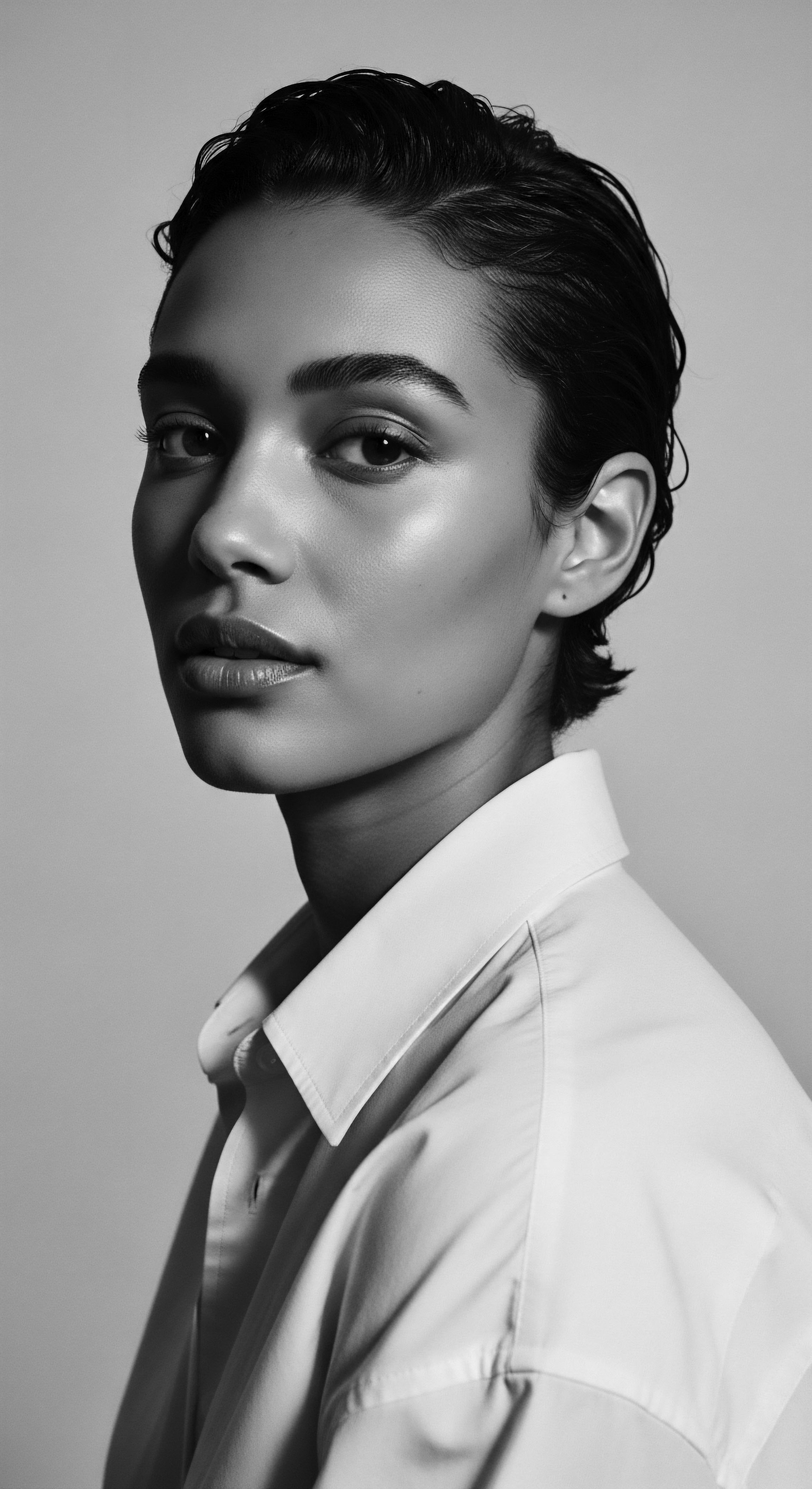
Fundamentals
The very notion of ‘Natural Hair’ within Roothea’s living library extends beyond a mere biological description; it is a profound declaration, an ancestral whisper carried through each coil and strand. At its foundational level, Natural Hair signifies hair in its unaltered state, free from chemical treatments that permanently change its inherent texture, such as relaxers, perms, or texturizers. This definition encompasses the diverse spectrum of hair patterns, from waves to the tightest coils, as they emerge from the scalp, reflecting the singular blueprint of each individual’s heritage. For those new to the discourse surrounding textured hair, particularly within Black and mixed-race communities, understanding Natural Hair begins with recognizing its primordial connection to identity and tradition.
Long before the imposition of external beauty standards, hair served as a potent communicator of status, age, marital standing, and tribal affiliation across various African societies. In these early communities, hair was not simply an adornment; it was a living canvas, a repository of collective memory and spiritual connection. The meticulous styling practices, often requiring hours of communal effort, reinforced social bonds and transmitted cultural knowledge across generations. The simple explanation of Natural Hair, therefore, is rooted in this deep historical context ❉ it is hair as it was honored and cared for in ancestral lands, a physical manifestation of an unbroken lineage.

Echoes from the Source ❉ Ancient Meanings and Cultural Expressions
To truly grasp the foundational meaning of Natural Hair, one must journey back to pre-colonial Africa, where its significance was woven into the very fabric of daily existence and ceremonial life. In many West African societies, for instance, hair was viewed as the most elevated part of the body, a direct conduit to the divine and ancestral spirits. This spiritual understanding imbued hair care rituals with sacred purpose, transforming routine grooming into acts of reverence and connection. The varied textures, from the looser waves to the dense, tightly wound coils, were all celebrated as intrinsic aspects of beauty and belonging, each a testament to the rich genetic diversity of the continent.
In pre-colonial African societies, hair served as a living lexicon, communicating identity, status, and spiritual connection through its varied styles and adornments.
The communal act of hair styling, often a multi-hour endeavor, provided opportunities for storytelling, mentorship, and the passing down of oral histories. Young girls learned not only the intricate techniques of braiding and twisting but also the stories of their lineage and the medicinal properties of local botanicals used for hair care. This shared experience solidified communal bonds, making hair care a deeply social and intergenerational practice.
- Cultural Identity ❉ Hair patterns and styles often denoted specific tribal affiliations, allowing individuals to identify members of their own community from a distance.
- Social Status ❉ The complexity and adornment of a hairstyle could indicate wealth, marital status, age, or a person’s role within the societal hierarchy.
- Spiritual Connection ❉ Hair was frequently seen as a channel for spiritual energy, connecting individuals to ancestors and the divine realm.
The very concept of “Natural Hair” in these ancient settings was not a movement or a choice in opposition to something else; it was the inherent state of being, a cherished aspect of self and community. The techniques employed, such as braiding, twisting, and the use of natural oils and clays, were not merely cosmetic applications; they were practices born of deep understanding of hair’s biological needs in diverse climates and its cultural role.
Consider the ancient Egyptians, whose elaborate braided wigs and adorned styles were not just aesthetic choices but also symbols of status and religious devotion. Archaeological evidence from ancient Egypt, for example, reveals sophisticated hair practices, including the use of extensions and intricate braiding, some dating back to 3500 BCE. This historical record illustrates a long-standing tradition of valuing and styling hair in its natural forms, a practice that continued across various African kingdoms, where hair served as a visual language understood by all.
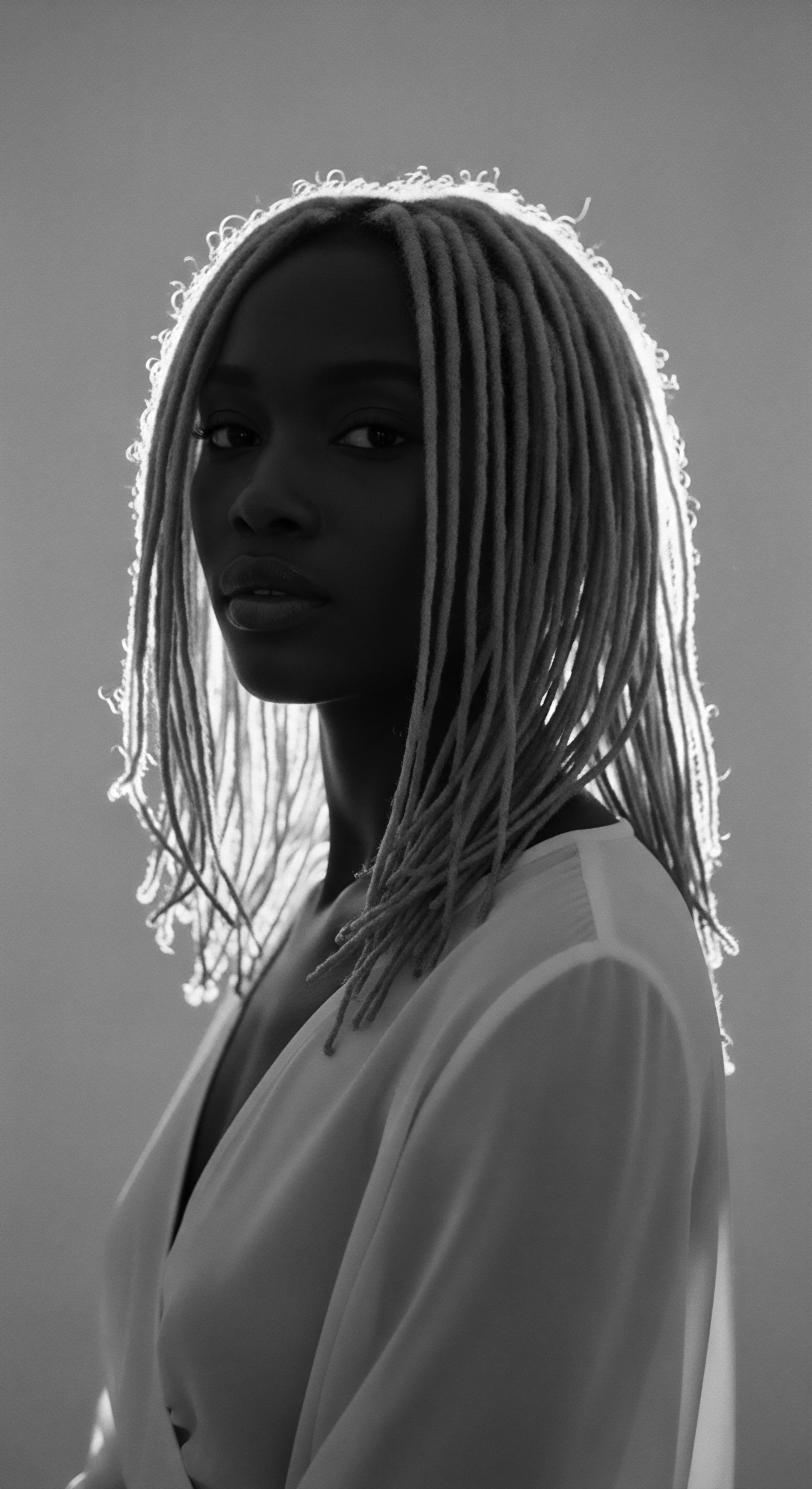
Intermediate
Moving beyond the foundational understanding, the intermediate definition of Natural Hair for the Roothea reader delves into how its heritage practices have been transmitted and adapted across generations and geographies, particularly within the Black and mixed-race diaspora. This involves recognizing Natural Hair not merely as a state of being, but as a living legacy, a testament to resilience and cultural continuity. It speaks to the practical applications of traditional hair care, the evolution of styling practices, and the deep cultural meaning that has persevered despite centuries of displacement and oppression. The discussion here defines Natural Hair with greater depth, focusing on its role in traditional and evolving hair care rituals for textured hair across the diaspora, emphasizing the enduring nature of ancestral knowledge.
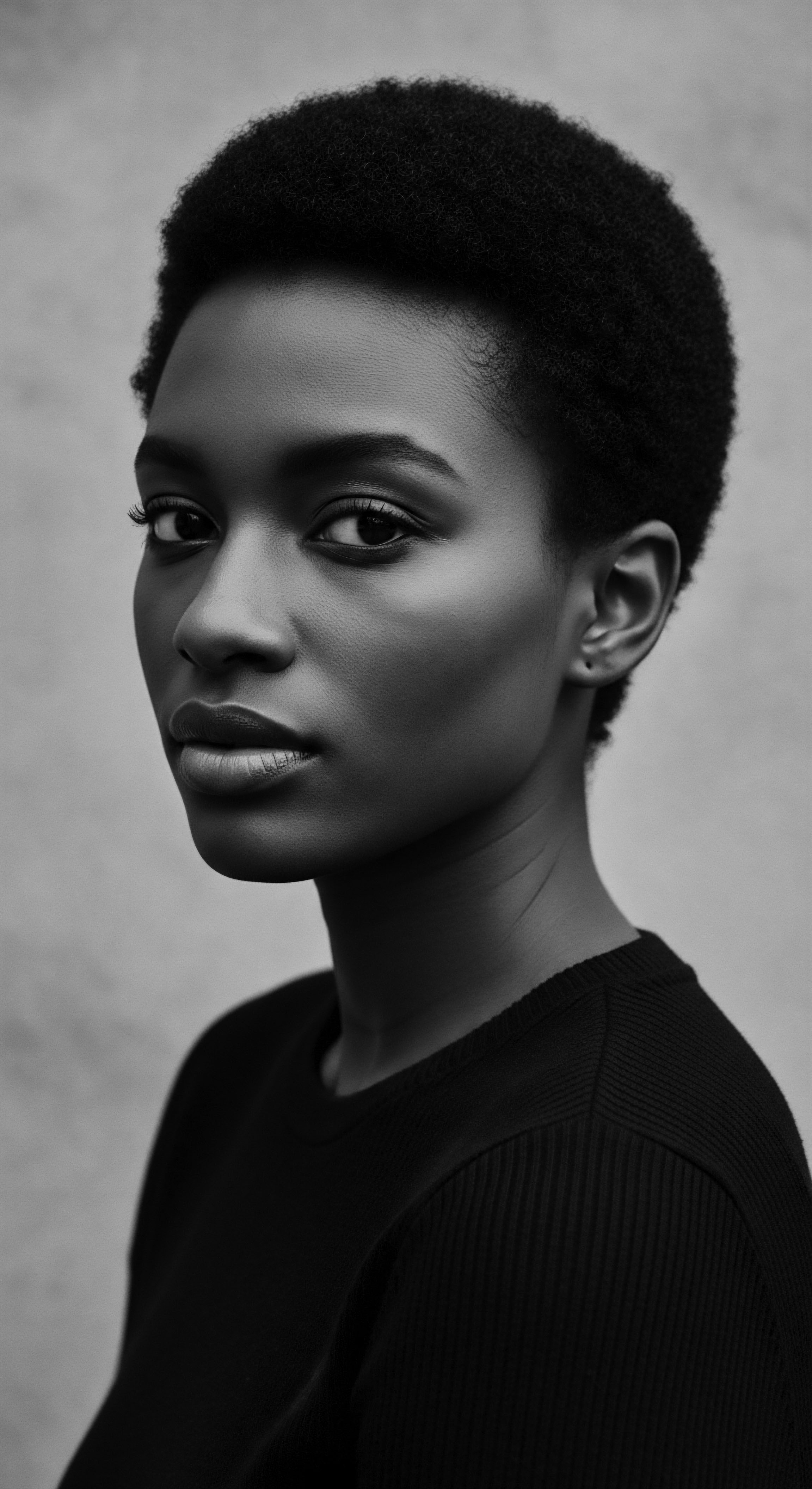
The Tender Thread ❉ Sustaining Ancestral Practices
The transatlantic slave trade marked a tragic turning point, as enslaved Africans were forcibly stripped of their cultural markers, including their hair, which was often shaved upon capture. This act aimed to erase identity and sever spiritual connections. Yet, even under such dehumanizing conditions, the spirit of Natural Hair endured. Enslaved Africans, resourceful and determined, found ways to preserve their hair traditions, often adapting them with the limited resources available.
For instance, some West African women, particularly rice farmers, braided rice seeds into their hair before forced migration, ensuring the survival of staple crops and a piece of their homeland in the Americas. This historical example powerfully illustrates the profound connection between hair, survival, and ancestral practices, transforming a simple hairstyle into a vessel of life and resistance.
This period also saw the adaptation of styling methods to harsh new realities. Cornrows, a braiding style dating back thousands of years in Africa, became a practical means to keep hair neat and protected during grueling labor. Beyond practicality, cornrows also served as a covert communication tool, with specific patterns encoding escape routes or messages among enslaved communities. This adaptation highlights the ingenuity and enduring cultural significance of Natural Hair, transforming it into a silent language of defiance and hope.
The journey of Natural Hair through the diaspora is a testament to cultural resilience, as ancestral practices adapted to new realities, becoming symbols of continuity and quiet rebellion.
The communal aspects of hair care, though disrupted, also persisted. Despite the absence of traditional tools and ingredients, individuals found solace and connection in caring for one another’s hair, sharing knowledge and maintaining a sense of community. This period laid the groundwork for the intergenerational transmission of hair care wisdom that continues to shape textured hair experiences today.

Evolution of Care Rituals in the Diaspora
The historical trajectory of Natural Hair care in the diaspora is one of constant adaptation and innovation. Without access to the indigenous oils, herbs, and clays of their homelands, enslaved Africans and their descendants turned to readily available alternatives, often utilizing ingredients from their new environments. This resourcefulness led to the development of unique care practices, passed down through families, which form the bedrock of many contemporary Black and mixed-race hair care routines.
| Traditional African Practice Use of natural plant oils (e.g. shea butter, palm oil) for moisture and protection. |
| Diasporic Adaptation/Modern Parallel Application of petroleum jelly, mineral oil, or later, a resurgence of plant-based oils (coconut, jojoba) for conditioning and sealing. |
| Traditional African Practice Communal hair styling and bonding. |
| Diasporic Adaptation/Modern Parallel "Kitchen beautician" traditions, salon culture, and online natural hair communities fostering shared knowledge and social connection. |
| Traditional African Practice Intricate braiding and twisting for hair protection and communication. |
| Diasporic Adaptation/Modern Parallel Continued popularity of protective styles (braids, twists, locs) for growth retention and as cultural expressions. |
| Traditional African Practice These adaptations demonstrate the enduring spirit of care and cultural preservation for Natural Hair across historical periods. |
The mid-20th century saw the rise of chemical straightening as a prevalent practice, often driven by societal pressures to conform to Eurocentric beauty standards. Yet, even during this era, pockets of resistance maintained traditional practices, keeping the knowledge of Natural Hair care alive. The Civil Rights and Black Power movements of the 1960s and 1970s sparked a powerful resurgence, as the Afro hairstyle became a potent symbol of Black pride, self-acceptance, and a rejection of oppressive beauty norms. This period marked a conscious reclaiming of Natural Hair as a political statement and a celebration of inherent beauty.
The current Natural Hair movement, gaining significant momentum in the early 2000s, represents a further evolution. It is characterized by a global embrace of textured hair, driven by increased access to information, specialized products, and a renewed appreciation for ancestral practices. This contemporary movement stands on the shoulders of generations who preserved and adapted their hair traditions, affirming that Natural Hair is not a trend, but a timeless expression of heritage.

Academic
The advanced understanding of ‘Natural Hair’ transcends its simple biological description or its historical journey, arriving at a sophisticated interpretation grounded in anthropological, historical, and scientific inquiry. For the expert reader, Natural Hair represents the intricate biological architecture of textured hair in its native state, a marvel of genetic diversity that has profoundly shaped cultural practices, social identities, and acts of resistance across the Black and mixed-race diaspora. This layer of definition considers Natural Hair as a dynamic interplay of biological predispositions, deeply rooted cultural significance, and evolving sociopolitical meaning, offering a compound, deeply insightful explication of its full importance and implications for understanding and celebrating this living heritage. It is a concept that demands an examination of its structural complexities, its historical weaponization, and its enduring role as a beacon of self-determination.

The Unbound Helix ❉ Biocultural Dimensions of Textured Hair
From a scientific perspective, Natural Hair refers to the unique helical structure of the hair shaft in individuals of African descent, characterized by its varying degrees of curl, coil, and zig-zag patterns. This distinct morphology, shaped by millennia of evolutionary adaptation to diverse environments, results in hair that often appears dense and voluminous yet can be delicate due to the points where the hair shaft bends. These bends, or curves, create natural points of weakness, making textured hair prone to dryness and breakage if not cared for with specific consideration for its structural integrity. Understanding this elemental biology is crucial for appreciating the ancestral care practices that intuitively addressed these needs, long before modern scientific instruments could visualize them.
Natural Hair, a biological marvel of diverse helical structures, serves as a powerful conduit for ancestral knowledge and a symbol of enduring cultural identity.
Anthropological studies consistently highlight hair as a primary marker of identity, group affiliation, and social communication in African societies. Lori Tharps, a scholar of Black hair history, observes that in pre-colonial African societies, a person’s hairstyle could communicate their family lineage, tribal belonging, marital status, and even occupation. This profound communicative function demonstrates that Natural Hair was never a neutral canvas; it was an active participant in social discourse, a visual language understood by all within the community. The cultural investment in hair was not merely aesthetic; it was a deeply practical and symbolic one, reflecting a holistic worldview where the physical body, social fabric, and spiritual realm were intrinsically connected.

The Weaponization of Texture ❉ A Historical Trauma
The transatlantic slave trade and subsequent colonial periods systematically attacked this deep connection to Natural Hair. Enslaved Africans were often subjected to forced head shavings, a deliberate act of dehumanization designed to strip them of their identity and cultural memory. This traumatic severance from ancestral hair practices was compounded by the imposition of Eurocentric beauty standards, which pathologized kinky and coiled textures as “nappy” or “unruly.” This historical denigration created a lasting psychological impact, fostering internalized shame and a pervasive pressure to chemically alter Natural Hair to conform to dominant ideals. The historical context reveals that the rejection of Natural Hair was not an arbitrary preference, but a calculated strategy of oppression.
This historical trauma is further evidenced by policies like the Tignon Laws enacted in 18th-century Louisiana. These laws mandated that free Black women, whose elaborate natural hairstyles were seen as a challenge to the racial hierarchy, cover their hair with a scarf or ‘tignon’. While intended to signify a lower social status, these women often transformed the tignon into a statement of defiance, adorning them with colorful fabrics and jewels, thus reasserting their identity through sartorial resistance. This specific historical example powerfully illustrates how the policing of Natural Hair was a direct mechanism of racial control, and how Black women, even under duress, found ingenious ways to reclaim their agency and express their heritage.
The economic ramifications of this shift are also significant. The emergence of the Black hair care industry, initially dominated by figures like Madam C.J. Walker, who popularized straightening tools and products, reflects a complex dynamic of both entrepreneurial spirit and adaptation to a society that penalized natural textures. While these innovations offered Black women a means to navigate a discriminatory world, they also solidified the preference for straightened hair, diverting economic resources away from products designed to nourish and style natural textures.
- Psychological Impact ❉ The historical deprecation of textured hair has contributed to internalized negative perceptions, impacting self-esteem and identity within Black and mixed-race communities.
- Economic Disparities ❉ The hair care industry for Black consumers has historically seen disproportionately low ownership by Black entrepreneurs, despite the significant market size.
- Legal Battles ❉ Discrimination against natural hairstyles in workplaces and schools persists, leading to ongoing legal and social movements like the CROWN Act, which seeks to protect the right to wear natural hair without prejudice.
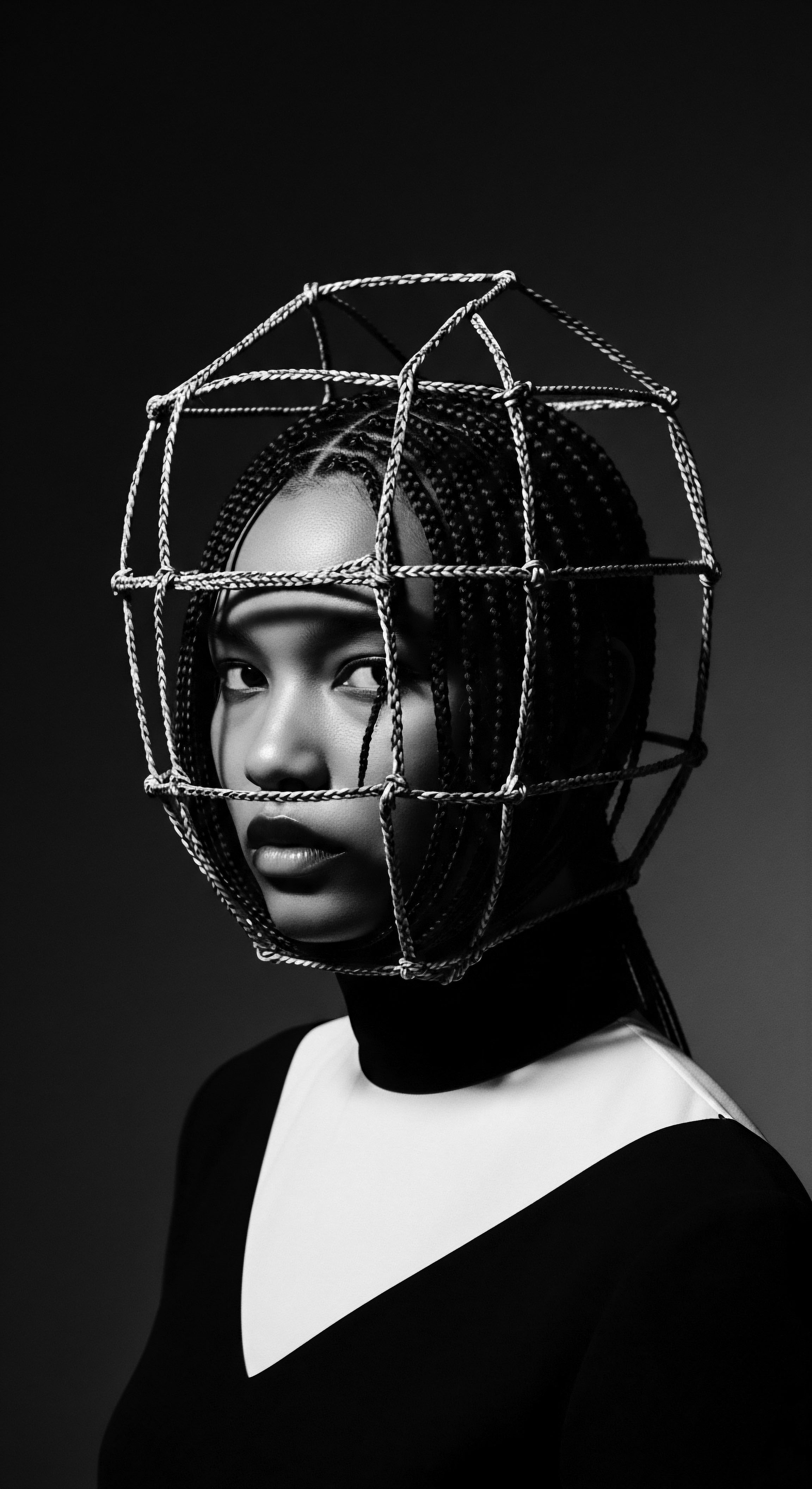
Validation and Reclamation ❉ Science, Heritage, and Future
Contemporary scientific understanding now validates many long-standing ancestral hair care practices. For instance, the use of natural oils and butters, common in African traditions, aligns with modern dermatological knowledge regarding the need for emollients to protect and moisturize the porous, coily hair shaft. The practice of protective styling, such as braiding and twisting, reduces manipulation and environmental exposure, promoting length retention, a principle now widely recognized in hair science. This convergence of ancient wisdom and modern scientific insight reinforces the profound efficacy of heritage-based care.
The current natural hair movement represents a profound act of cultural reclamation and self-acceptance. It is a conscious decision to divest from Eurocentric beauty norms and to reconnect with ancestral heritage. This movement is not merely about hairstyles; it is a declaration of identity, a political statement, and a pathway to holistic wellness that acknowledges the intertwined nature of physical appearance, mental wellbeing, and cultural belonging. The celebration of Natural Hair is a collective healing, a re-embracing of what was once denigrated, now understood as a source of strength and beauty.
| Era/Context Pre-Colonial Africa |
| Meaning/Perception of Natural Hair Symbol of identity, status, spirituality, and communication. |
| Associated Practices/Impact Intricate braiding, communal styling, use of natural ingredients, holistic connection to self and community. |
| Era/Context Transatlantic Slave Trade & Colonialism |
| Meaning/Perception of Natural Hair Target of dehumanization, symbol of inferiority, subject to erasure. |
| Associated Practices/Impact Forced shaving, Tignon Laws, pressure to straighten hair, emergence of early Black hair care industry adapting to new norms. |
| Era/Context Mid-20th Century (Civil Rights/Black Power) |
| Meaning/Perception of Natural Hair Symbol of resistance, pride, and Black consciousness. |
| Associated Practices/Impact Rise of the Afro, conscious rejection of chemical straightening, political statement of self-acceptance. |
| Era/Context Contemporary Era (21st Century) |
| Meaning/Perception of Natural Hair Celebration of diversity, self-acceptance, heritage, and informed care. |
| Associated Practices/Impact Global natural hair movement, growth of specialized products, scientific validation of traditional practices, legislative efforts (CROWN Act). |
| Era/Context This progression illustrates Natural Hair's continuous evolution as a powerful marker of cultural resilience and self-determination. |
The ongoing dialogue surrounding Natural Hair within academic and social spheres continues to expand. Scholars examine its role in mental wellness, the intersection of hair and public policy, and its representation in media. The collective effort to define, understand, and celebrate Natural Hair represents a continuous process of historical reckoning and cultural affirmation, securing its rightful place as a profound aspect of Black and mixed-race heritage for generations to come. This ongoing redefinition of beauty and acceptance, rooted in ancestral wisdom and validated by contemporary insights, positions Natural Hair as a central pillar in the narrative of self-love and cultural pride.

Reflection on the Heritage of Natural Hair
As we close this exploration within Roothea’s living library, the story of Natural Hair reveals itself as a profound meditation on endurance, ingenuity, and the spirit of a people. It is a narrative woven with threads of biological wonder, historical challenge, and unwavering cultural pride. From the sacred rituals of ancient African civilizations, where every coil and braid told a story of lineage and spirit, to the harrowing journey across oceans where hair became a silent language of survival, Natural Hair has consistently held a mirror to the collective experience of Black and mixed-race communities. Its evolution from a signifier of status to a target of oppression, and ultimately, to a powerful emblem of liberation, speaks to the inherent strength residing within each strand.
The wisdom passed down through generations, often in hushed tones and tender touches during communal styling sessions, laid the groundwork for contemporary understanding of textured hair. This ancestral knowledge, now affirmed by scientific inquiry, reminds us that the paths to wellness often echo the ancient footsteps of those who came before us. Natural Hair, therefore, is not merely a hairstyle choice; it is a connection to a deep, living heritage, a tangible link to resilience, and a vibrant declaration of identity that continues to shape futures with every coil, curl, and wave. It stands as a timeless testament to beauty in its most authentic form, a continuous song of self-acceptance resounding across time.
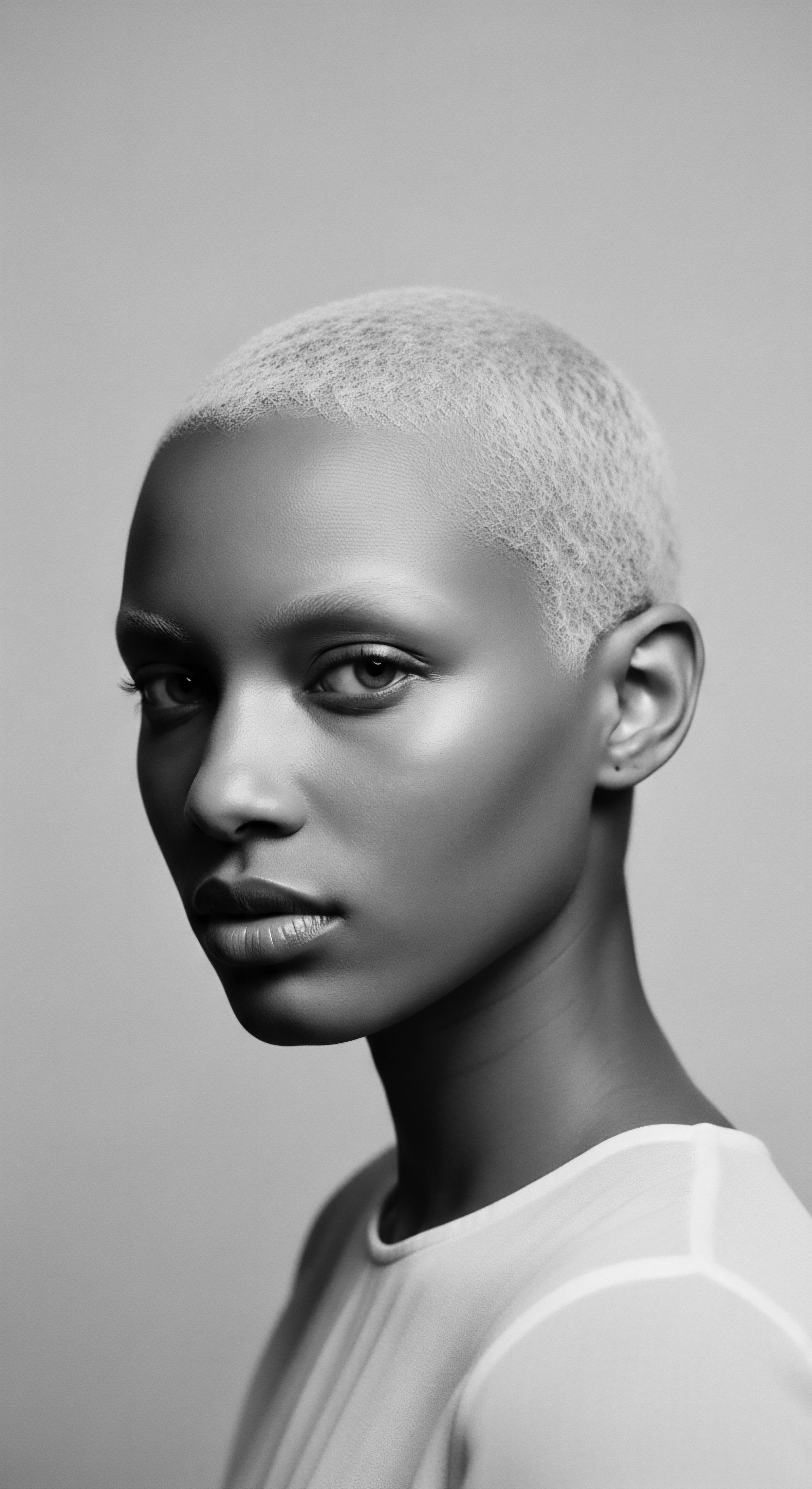
References
- Byrd, A. & Tharps, L. L. (2001). Hair Story ❉ Untangling the Roots of Black Hair in America. St. Martin’s Press.
- Gordon, M. (2018). Hair Story ❉ Untangling the Roots of Black Hair in America (as cited in Omotoso, S. A. 2018).
- Omotoso, S. A. (2018). Gender and Hair Politics ❉ An African Philosophical Analysis. Journal of Pan African Studies, 11(3), 1-17.
- Sherrow, V. (2006). Encyclopedia of Hair ❉ A Cultural History. Greenwood Press.
- Tharps, L. L. (2014). Hair Story ❉ Untangling the Roots of Black Hair in America. St. Martin’s Press.
- Johnson, D. E. & Bankhead, T. (2014). Hair It Is ❉ Examining the History of Black Women’s Hair in America. Journal of Black Studies, 45(4), 312-326.
- Dove, A. E. & Powers, M. J. (2018). The Natural Hair Movement ❉ A Social and Political Statement. Journal of Black Psychology, 44(2), 105-120.
- Schmidt, M. (1926). The Art of Hairdressing in Africa. Leipzig ❉ K.F. Koehler.
- Scherz, E. R. Scherz, A. & Scherz, R. (1992). Rock Paintings in Namibia. Cologne ❉ Rüdiger Köppe Verlag.
- Lawal, B. (2000). Hair in African Art and Culture. African Arts, 33(3), 96-103.
- Majali, M. et al. (2017). The Cultural Significance of Hair in African Societies. University of Cape Town Press.
- Mbilishaka, A. et al. (2020). Hair, Identity, and Black Women’s Well-being. Routledge.
- Patton, M. (2006). African American Hair ❉ A Cultural and Historical Perspective. Peter Lang.
- Thompson, C. (2009). Black Women and Identity ❉ A Sociological Perspective on Hair. New York University Press.
- Williams, S. (2019). Hair Power ❉ Black Women, Beauty, and Resistance. Columbia University Press.
